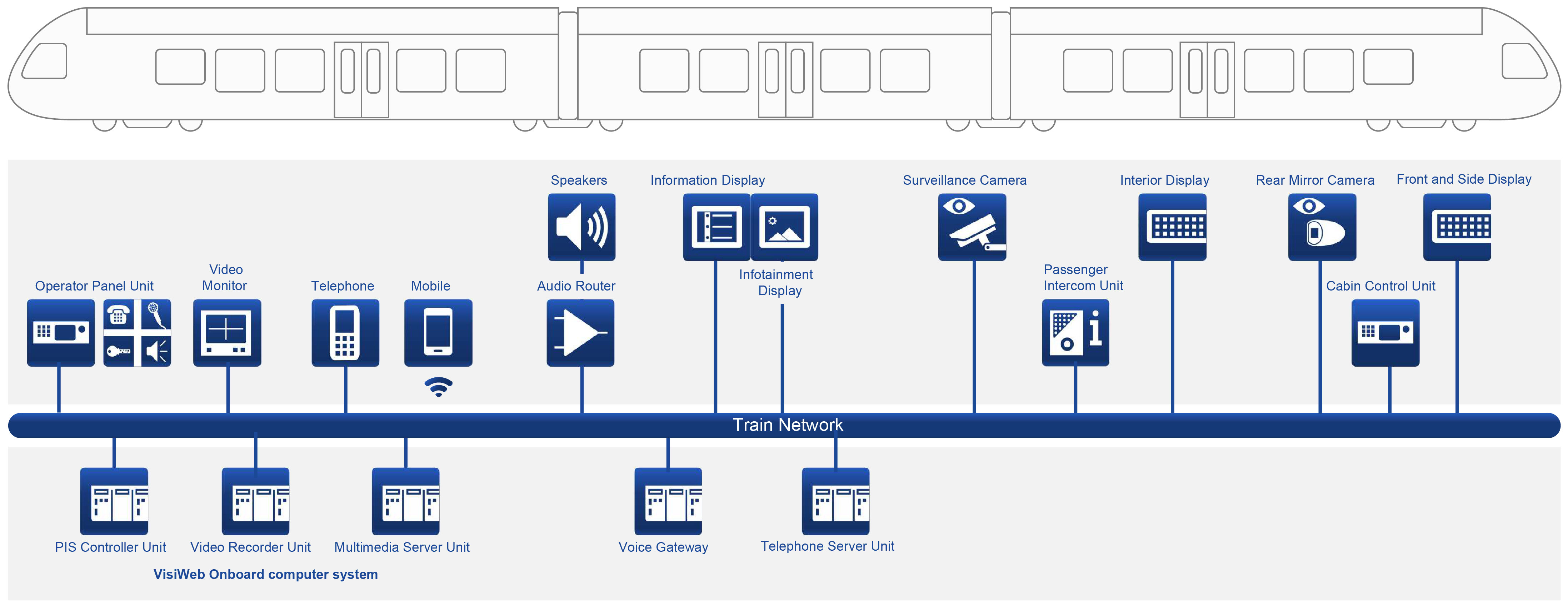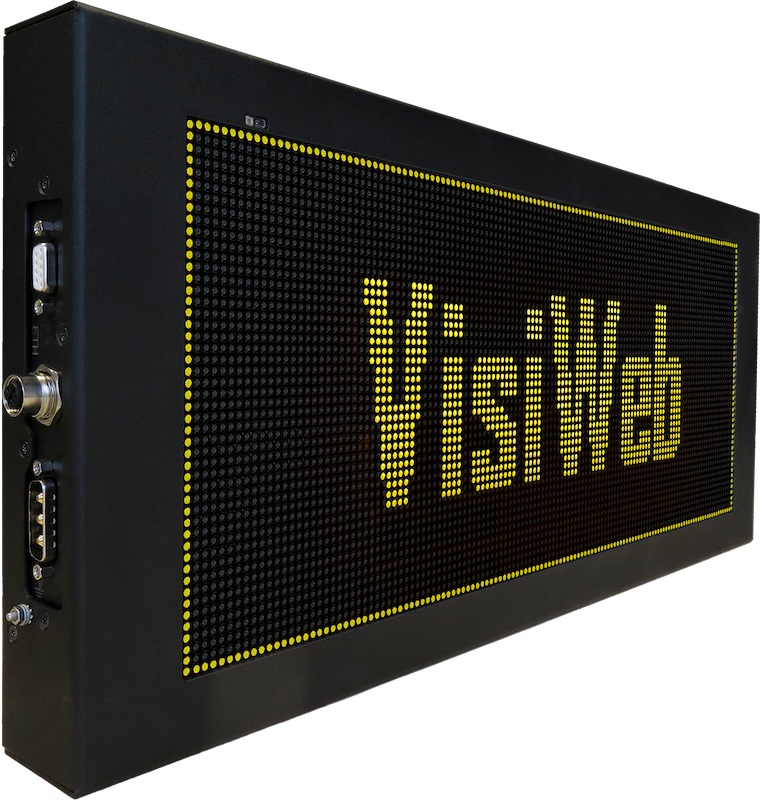
VisiWeb system overview The modular structure of the VisiWeb overall system enables sustainable, evolutionary modernisation.
The modular design of the VisiWeb passenger information system allows for sustainable, evolutionary modernisation, which can extend the life of the information system and the operational duration of the vehicle. This approach utilises existing resources and technologies, making it sustainable not only from an ecological point of view but also from an economic perspective because the investment remains protected.
Passengers require reliable information regarding timetables, connections, and arrival and departure times – particularly if there are disruptions in services. To achieve this, train operators need a powerful and effective passenger information system tailored to their specific needs. They need a system that is sustainable to operate and maintain over a long period, whilst being flexible enough to adapt to technological changes, evolving regulations as well as standards.
Modular structure
Ruf’s VisiWeb passenger information system has been in use in over 2,800 vehicles worldwide for over 20 years. VisiWeb is based on a modular structured ICT total system, which offers numerous advantages. Modular systems like VisiWeb are highly scalable and can be more easily adapted to meet new requirements and technologies due to their flexibility..
Modernise the evolutionary way
Modularity is a basic prerequisite for the evolutionary modernization of systems over a long period of time. This is crucial because passenger information systems are highly complex IT systems, and while the operational life of rolling stock typically ranges from 30-40 years, the ICT systems and components installed within are likely to undergo several updates and renewal cycles during this time.
Built-in sustainability
Thanks to VisiWeb’s evolutionary system architecture, the aging process of the entire system can be slowed down and its lifespan extended by gradually introducing innovations and updates, rather than completely replacing the whole system. This approach continues to utilize existing resources and technologies, which is not only ecologically sustainable but also economically so, as it continues to protect previous investments..
Good maintenance extends reliability
After the warranty period, a maintenance contract extends the protection of the passenger information system by providing access to Ruf’s System and Software engineers. Regular maintenance is essential for long-term reliable operation, allowing for early identification of problems before they might lead to serious failures.
Maintenance training
Maintenance and obsolescence management are measures to extend the lifespan of an information system. Therefore, Ruf offers comprehensive maintenance training directly on-site for their customers, updating the knowledge of maintenance crews and quickly training new staff in the maintenance of VisiWeb systems.
VisiWeb obsolescence management
 Railway operators need an overview of the obsolescence status of components to ensure guaranteed and continuous supply over the planned operational lifespan of their vehicles. Ruf provides proactive obsolescence management to detect critical component obsolescence early, and initiate the reactive replacement process, which will replace obsolete components with suitable alternatives or develop new ones according to “form-fit-function”.
Railway operators need an overview of the obsolescence status of components to ensure guaranteed and continuous supply over the planned operational lifespan of their vehicles. Ruf provides proactive obsolescence management to detect critical component obsolescence early, and initiate the reactive replacement process, which will replace obsolete components with suitable alternatives or develop new ones according to “form-fit-function”.
New LED destination displays
The VisiWeb LED destination displays – newly developed by Ruf – feature ultra-bright LED matrix modules of the latest generation. These displays are suitable not only for use in newly manufactured vehicles, but also as replacements for obsolete displays in refit projects. They are equally suitable as general second-source components. The VisiWeb LED side display and the VisiWeb LED front display are available long-term and can be quickly customized according to customer specifications thanks to their modular design following “form, fit, function”.

